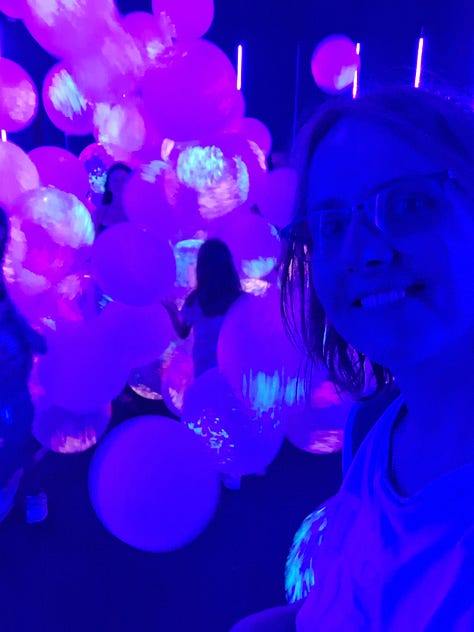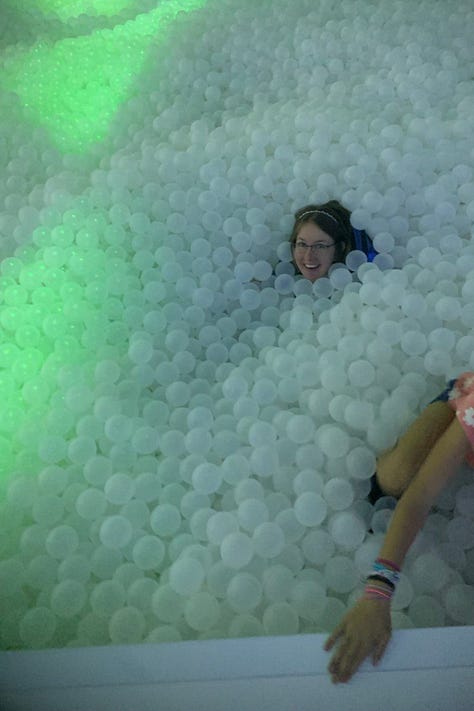What are you optimizing for?
It's time to review and recalibrate your autopilot.
👑 Hey there, I am Val - Empress of Remote. Welcome to this weekly-ish newsletter on leading with integrity, remote ops, and making intentional choices (not just at work).
💡This week’s post is about optimizing your life for yourself - at home and at work. You’ve been doing it all of your life, so you might as well get intentional about it.
A younger version of myself put a lot of effort into living with less. The 100 things challenge, the capsule wardrobe, the minimalist lifestyle - I was all in. I loved being able to move house, city, continents easily, to start anew whenever needed or desired.
Today I own a sofa and 52 plants. I buy copies of books I love so guests can discover them in my living room. I own a Thermomix and a milk foamer, and a huge solid wooden table that seats 10 and which I can barely move on my own.
On surface level it looks like I finally settled. Kids will do that to you, just ask Marie Kondo.
And yet, I also know that values and habits don’t change that easily.
If you’ve ever been part of a change management project at work, you’ve seen the results. Even a major reorg doesn’t fundamentally change what people do.
Unsurprisingly, I am still optimizing for the same things - within a different context.
I optimize for ease.
Ease isn’t simple. Ease requires removing friction through intentional decisions.
I still enjoy decluttering. If something hasn’t been used in over a year (and it’s not Christmas related), I’ll find it a better home.
The wine glasses in my house are stored next to the table where I am most likely to serve wine to my guests.
The plates and cups are in an open shelving unit, in easy reach for an 8 year old to set the table.
I use plants to occupy space that would otherwise attract stuff.
I keep only the good knives, and I keep them sharp.
You are optimizing for who you are - and for who you want to be
I do not have a television in my living room. In it’s place is a plant-filled fireplace. I’ve made it easier to grab a book than to stare at a screen. I’ve removed Instagram for my phone to curb phone time. And I schedule my workouts into my calendar to make sure I move.
I do (and teach) the same at work.
You can close your email client for hours at a time.
There’s no penalty for deactivating notifications on your laptop (and phone).
There’s a solution for remembering all of those cryptic passwords.
If you’ve done it three times, there’s probably a way to automate or simplify.
Remind yourself what you are trying to achieve - and see if there’s a different way.
If you store your reminders and tasks in a to do list, you can forget about them (and they’ll find you - when it’s time).
You have more agency than you’d think. And, quoting Sarah K Peck from Startup Parent: we don’t have to do things the way they’ve always be done.
So - what are you currently optimizing for?
If the idea is completely novel for you, think about how you’ve handled challenges in the past, how you decide between two options. Look at your surroundings, at your agenda. Here are some examples of what you may be optimizing for.
If you are optimizing for stability or predictability, you may plan in advance or prefer recurring experiences. You have a pension saving accounts. You enjoy living in the same place for years, staying at the same company for longer than the typical 3-4 years. Your workout routine and your yearly vacation give you the grounding you need to enjoy life.
Or maybe you are optimizing for harmony. Your space has a colour scheme and you take your time in finding the perfect combination for about anything. You expect your computer keyboard to harmonize with your office space, your partner to wear an outfit that doesn’t clash with yours, the forms you design to be effortless. For you, beauty and utility are twins, not opposites.
If you are optimizing for community, you may spend time keeping track of different birthdays, organizing group activities and sharing the resulting photos with everyone. You know what’s going on in your network, who needs attention and who’s crushing it, and you cherish the energy that comes from connections.
Others themes that I’ve encountered are health, adventure, novelty and they usually turn the idea of more abstract core values into lived reality. There’s no right or wrong here. It just helps to understand your own frame reference.
What do you want to optimize for (more)?
Once you know what you optimize for, you can decide whether that matches with your current situation. It’s not set in stone, it’s more like an autopilot or driving assistance that you can modify if you decide to do so.
In my case, I want to add more joy to my usual modus operandi.
Ingrid Fetell found that joy often comes from contrast, from boldness, from remembering the things that make us smile. And Kurt Vonnegut reminds us to say out loud “If this isn’t nice, what is?” whenever we are experiencing a moment of joy.
That’s why I have bright yellow and pink cushions on my couch.
That’s why I jumped into the ball pit (even though my brain told me I am too old for that).
That’s why I allowed myself to scream while ziplining through the valley - a scream of pure joy that didn’t want to be suppressed.
And that’s why I chose the wine pairing at a recent dinner, experimenting with how wine can change the perception of food and vice versa.
If this isn’t nice, what is?



Wouldn’t it be nice to have a trusted and pragmatic mentor to discuss life’s challenges with? Get in touch and let’s talk. And don’t forget to subscribe, obviously:

